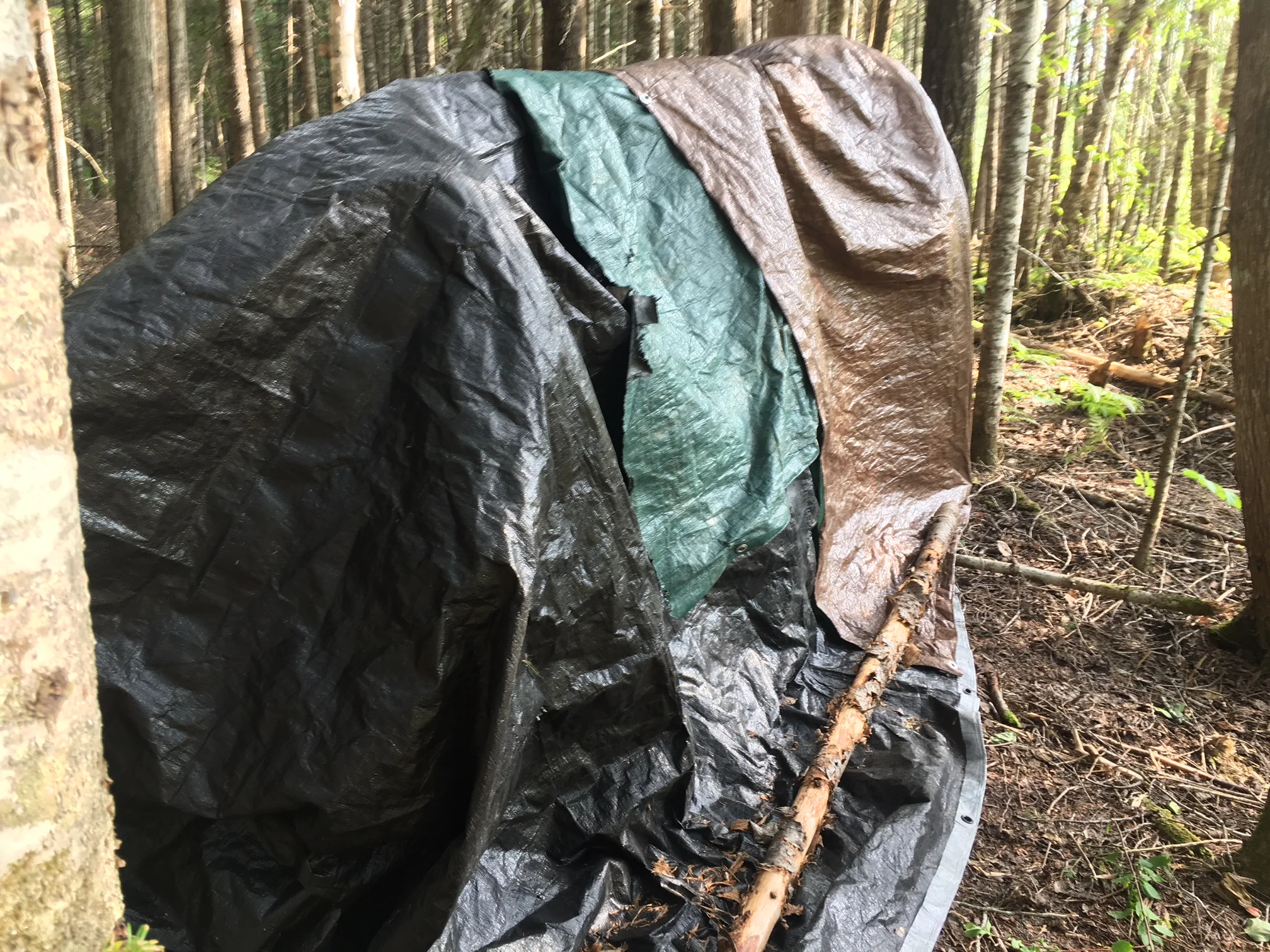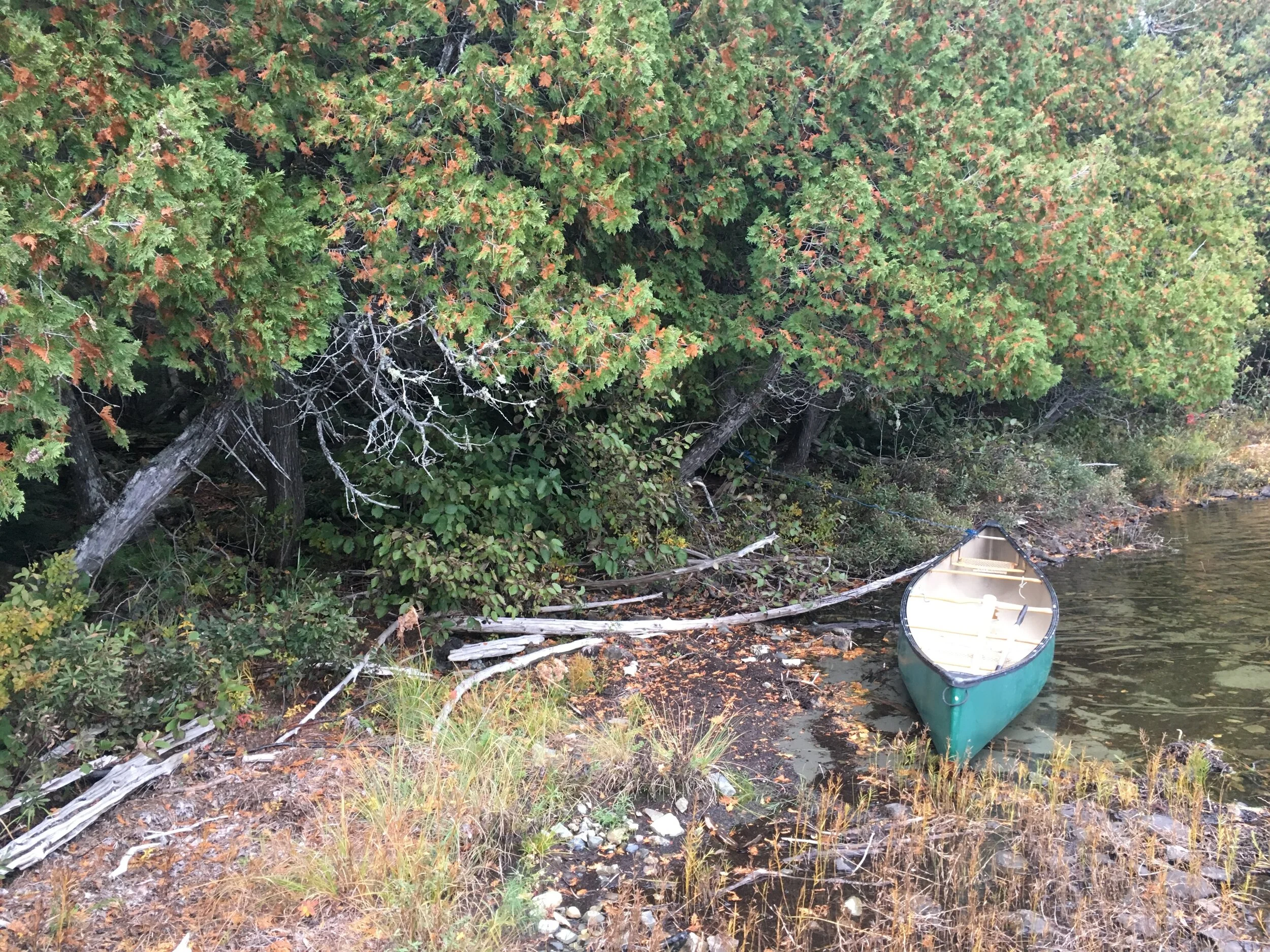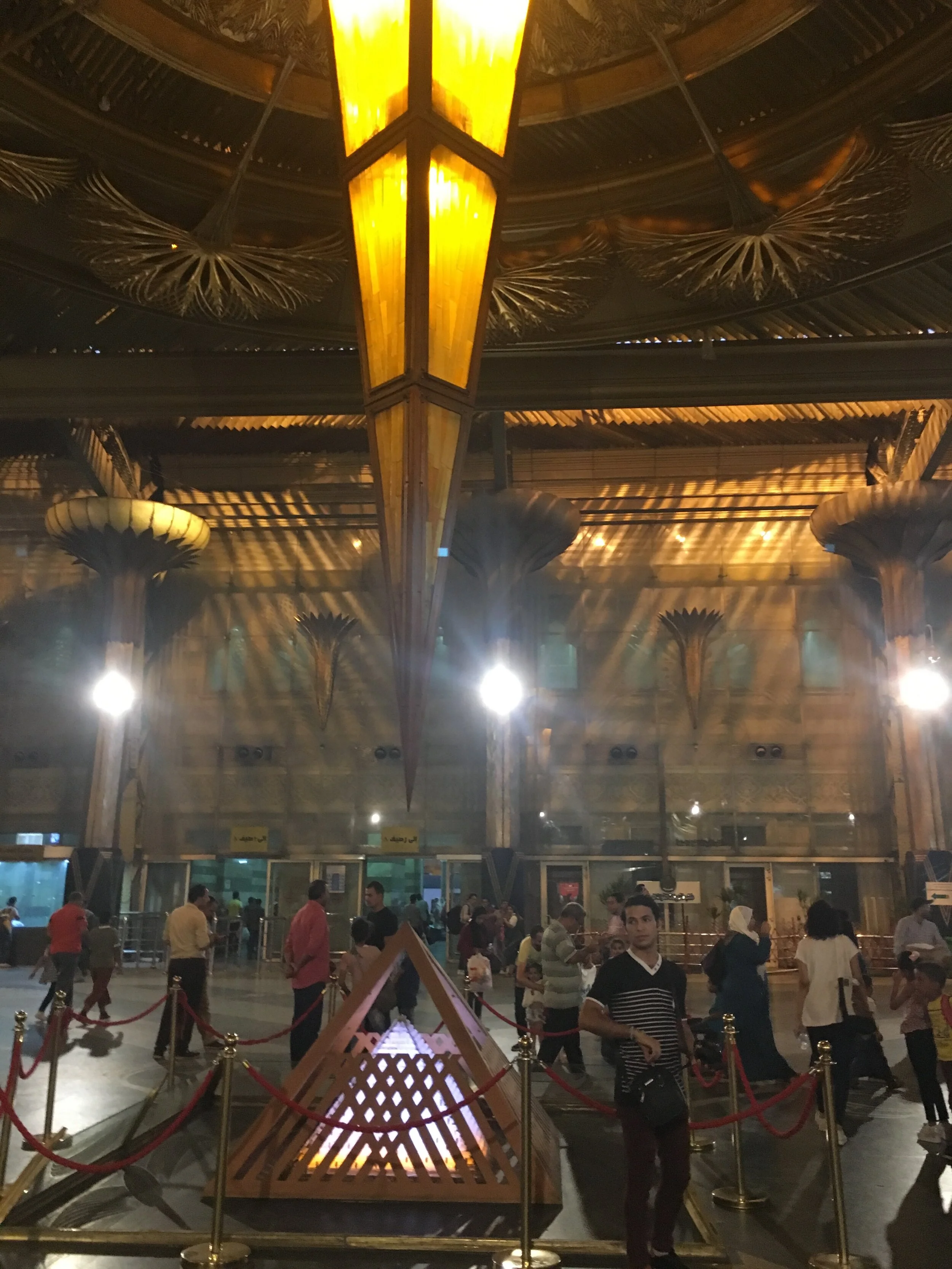Shelter Building
I've built snow forts for an afternoon of running around in the Cleveland winters. I've made pillow forts and tree houses, but I've never made a shelter to sleep in and I had certainly never slept in a shelter I made for four consecutive nights in the Maine wilderness.
The technique to practice was building a hoop house out of birch tree saplings and pines. I started with a bed of pine logs between 2 and 3 inches in diameter alternately fat and thin sides up. On top of the logs a layer of pine boughs made a cushy mattress. Six birch saplings created 3 hoops at the ends and middle of of the shelter. I whittled the ends into points and drove them into the ground then bent the saplings into a hoop shape and interwove the branches so they'd stay put.
I stabilized the hoops with more birch saplings woven under and over the three hoops at the top and bottom of the shelter. Then I covered the hoops with tarps and used logs around the perimeter to hold them down.
A bug net, my sleeping pad and sleeping bag completed the cozy interior. I could sit up but not stand inside my shelter. There was space at my feet should I want to bring a bag in (I kept my stuff in my storage tent up the hill in our campsite lovingly referred to as "Moose Vegas." I put my water next to the bed frame, hung my rain coat up on a supportive brace and left my shoes just inside the doorway.
Northern Maine is known for its voracious Mosquitos and black flies. There's a saying in camp, "northern Maine: if you're not cold, you're itchy." I was particularly concerned about waking up as one giant mosquito bite, luckily I had expertly tucked my mosquito net in and avoided any bites. What really surprised me was how warm my shelter was.
I had been sleeping in a hammock tent which allows the air to circulate thus can be rather chilly. Inside my windowless, tarp-covered shelter I was very cozy. The. I was warm. I removed my socks. Then my leggings. I unzipped my sleeping bag then took it off me completely and just used the liner as a thin cover. It wasn't the greatest nights' sleep. The hammock is very nicely my back compared to the ground but it was far better than I anticipated.
I built my shelter on a raised knoll surrounded by trees thinking they would offer a bit of cover from any rain and the sloping hill would direct any rainwater away from my shelter. The sloping hill also meant my head was slightly higher than my feet, which was annoying but not annoying enough to do anything about it.
The second night I was awoken by what I thought must have been a giant animal rustling and romping around my tarps. I peeked through a slit but couldn't see anything. I knew the chance of it being a bear or moose was small but everything seems so loud in the still night air. It was most likely a hare or a red squirrel exploring their new neighbor but it was still disconcerting.
The next night it rained. I begrudgingly trudged out to my shelter worried my sleeping bag would be wet. I was pleasantly surprised and impressed with myself. I hadn't brought a bunch of new tarps with me and so scavenged three tarps from previous students to cover my shelter. I found one big black tarp in good condition but it only covered half of my shelter. Another big brown tarp was filled with holes on one half so I put a small half of a green tarp between the two large tarps to double up on the holes. It wasn't pretty but it was highly functional.
With two afternoons worth of work and a little ingenuity I was able to make a functional shelter from the elements that was comfortable and warm. I'm improving my axe and knife skills, facing the elements and bushcrafting solutions to problems without using infrastructure.






